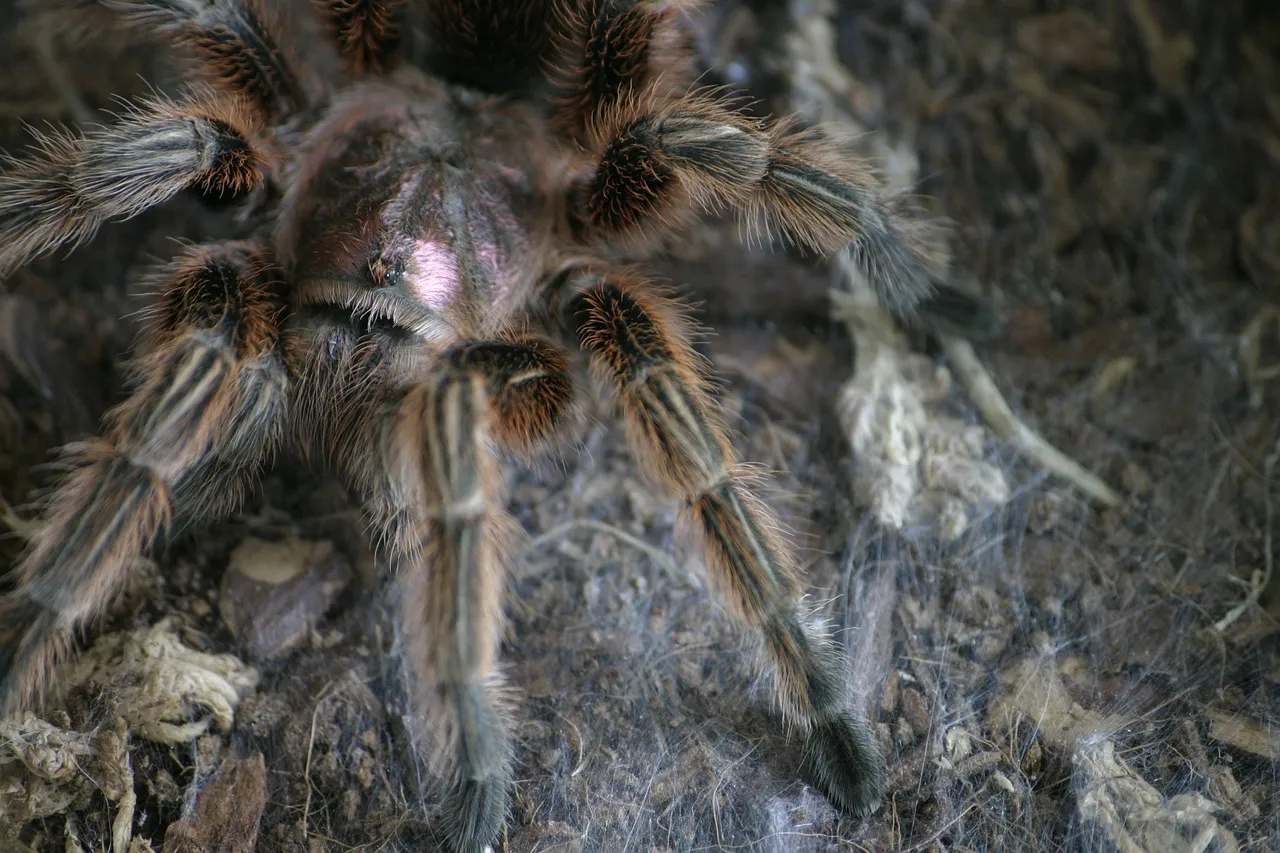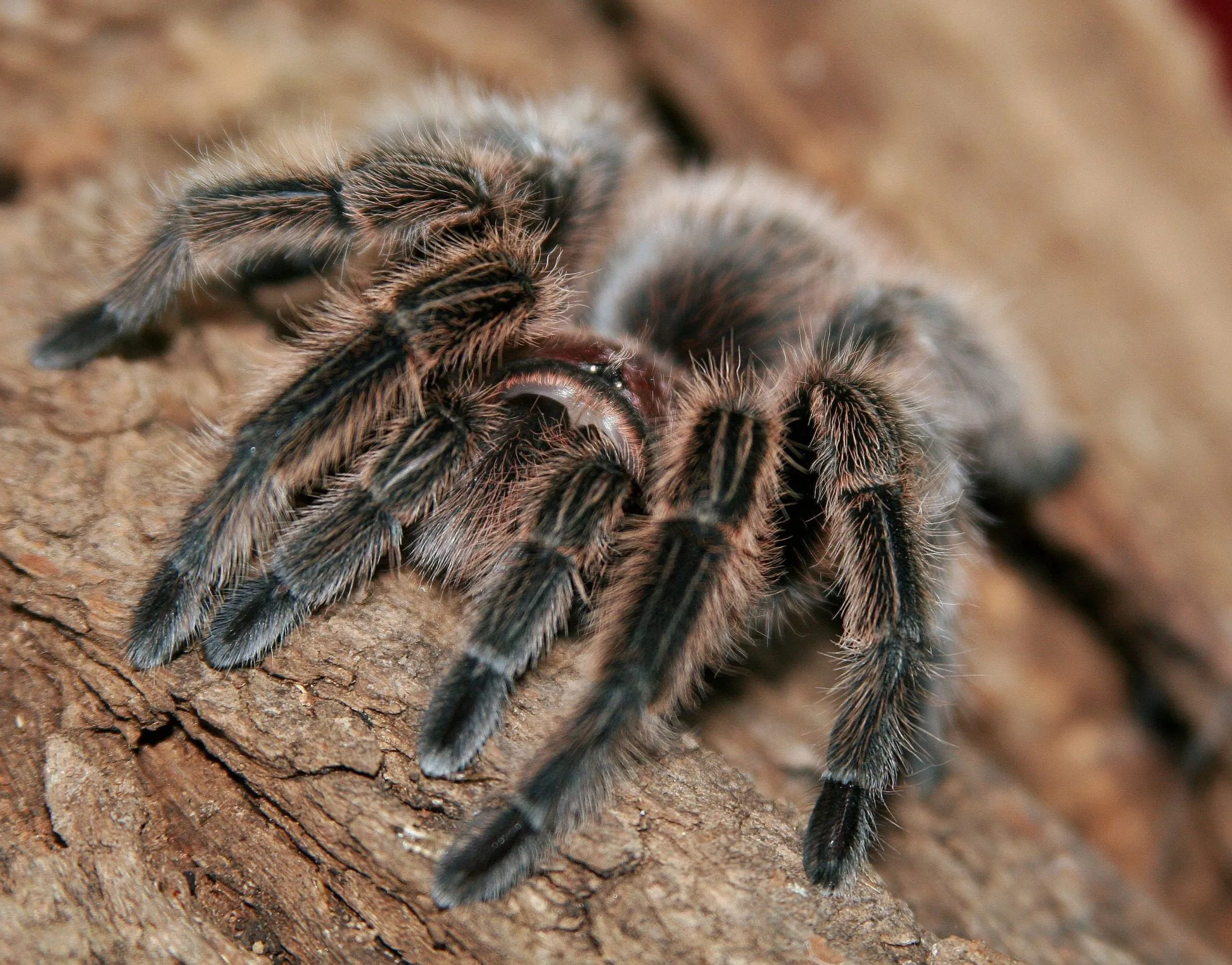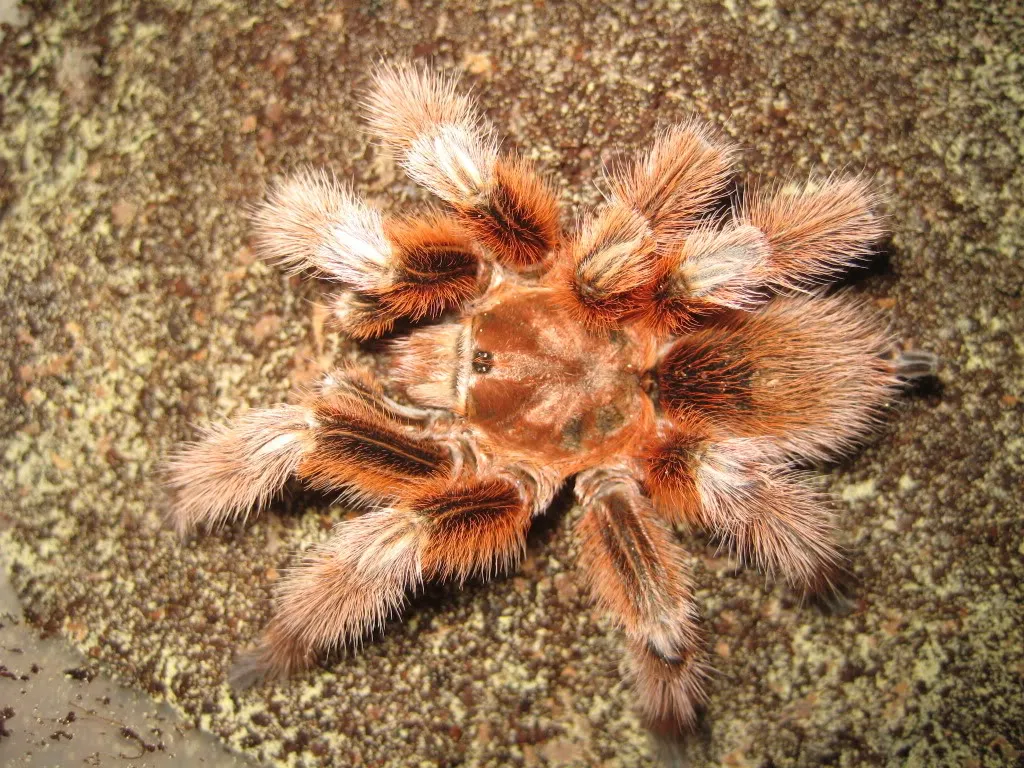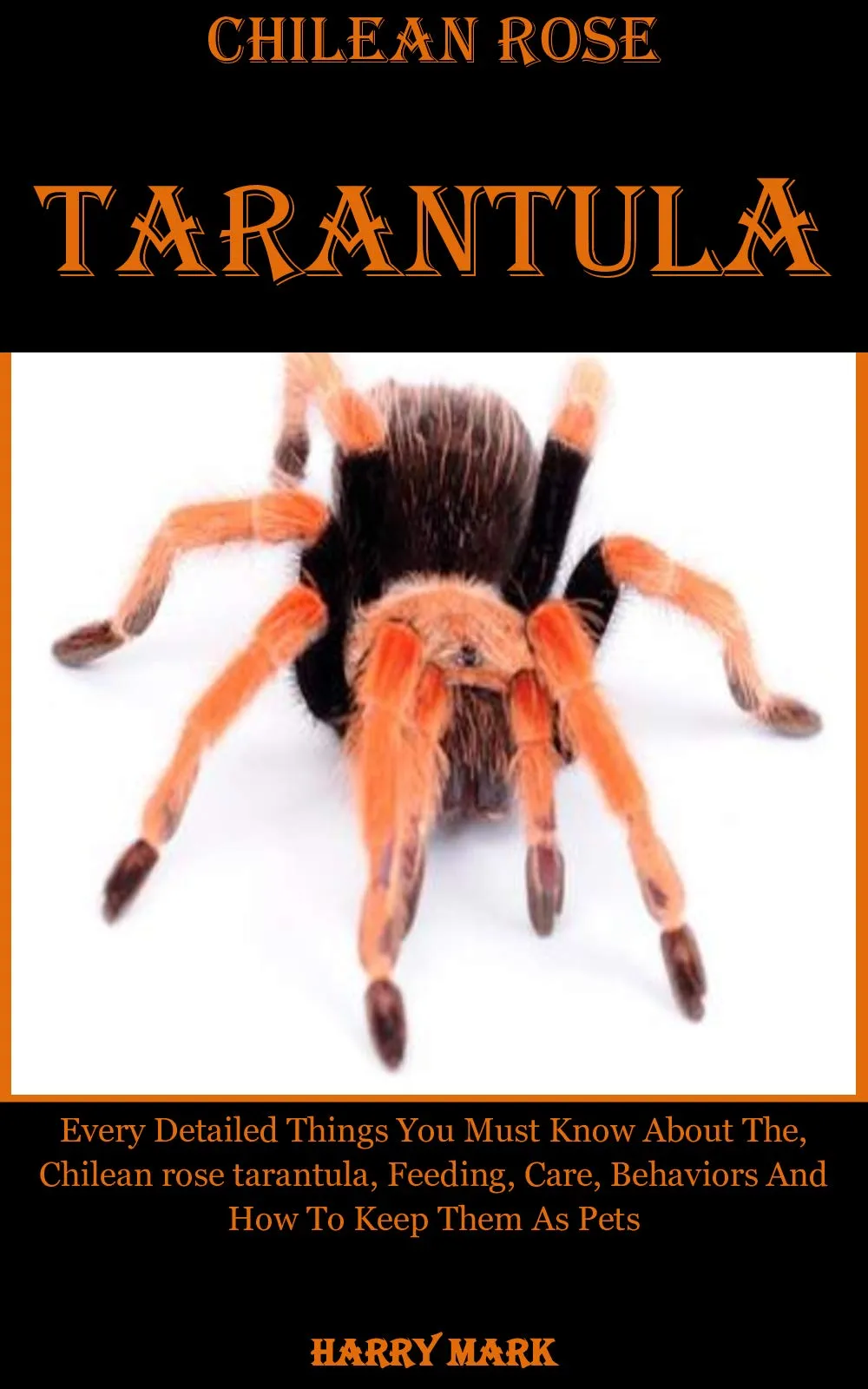Understanding the Chilean Rose Tarantula (Grammostola rosea)
The Chilean Rose Tarantula (Grammostola rosea), often called the Rose Hair Tarantula, is a popular choice for beginner tarantula enthusiasts. Known for their docile nature and relatively simple care requirements, these spiders can make fascinating and rewarding pets. Originating from the deserts of Chile, Argentina, and Bolivia, they are hardy creatures that can adapt well to captive environments. Before you bring one home, understanding their basic needs is crucial for their well-being. This comprehensive guide will walk you through everything you need to know, from setting up their habitat to feeding and handling.
Appearance and Characteristics
Chilean Rose Tarantulas are known for their beautiful coloration. They typically have a brown or reddish-brown carapace and legs, covered with fine hairs that give them a rose-like appearance, hence their name. Adults can reach a leg span of up to 5-6 inches, with females generally larger than males. These tarantulas are terrestrial, meaning they spend most of their time on the ground, and possess two sets of book lungs to breathe. They are not considered aggressive but will flick urticating hairs (small, irritating hairs) from their abdomen as a defense mechanism if they feel threatened. They have fangs used to inject venom that is not deadly to humans but can cause localized pain.
Natural Habitat and Behavior

In their natural habitat, Chilean Rose Tarantulas live in burrows or under rocks and logs to avoid the scorching desert heat and predators. They are primarily nocturnal, meaning they are most active at night, and spend the day hiding in their burrows. These tarantulas are ambush predators, meaning they wait for prey to come close before pouncing. They are solitary creatures, and while they may tolerate others in captivity, it’s best to house them individually to avoid any potential conflict. Their natural behavior should be considered when designing their enclosure. Understanding their needs is the first step to keep them healthy and happy.
Setting Up Your Chilean Rose Tarantula’s Habitat
Creating the right habitat is essential for the health and happiness of your Chilean Rose Tarantula. A well-designed enclosure provides the necessary environment for them to thrive, allowing them to exhibit their natural behaviors. It’s important to mimic their natural environment as closely as possible to reduce stress and ensure they feel secure. The proper setup minimizes stress and makes the tarantula feel safe. Here are some key factors to consider when setting up your tarantula’s home.
Choosing the Right Enclosure
For a Chilean Rose Tarantula, a terrestrial setup is best. The enclosure should be appropriately sized; for an adult, a 10-gallon tank or a similarly sized enclosure (e.g., 12x12x12 inches) is often sufficient. The enclosure should have a secure lid to prevent escapes, as tarantulas are skilled climbers. Ventilation is crucial to prevent mold and maintain good air quality, so ensure the enclosure has proper ventilation holes or mesh. Glass or clear plastic enclosures are ideal because they allow for easy viewing and cleaning. Avoid enclosures with rough surfaces that could injure the tarantula.
Substrate and Furnishings

The substrate is the material that forms the bottom of your tarantula’s enclosure. For a Chilean Rose Tarantula, a substrate that retains some moisture but also allows for burrowing is ideal. A mix of peat moss, coco fiber, and a bit of vermiculite works well. The substrate should be at least 3-4 inches deep to allow for burrowing. Provide a hide, such as a piece of cork bark or a half-log, for your tarantula to retreat to. A shallow water dish is essential for providing fresh water. Decorate the enclosure with artificial plants and decorations to provide a sense of security and make the environment more visually appealing.
Temperature and Humidity
Chilean Rose Tarantulas thrive in a temperature range of 70-80°F (21-27°C). This temperature can typically be maintained in a regular room. Avoid placing the enclosure in direct sunlight or near a heat source, as this can overheat the enclosure. Humidity levels should be kept at around 60-70%. This can be achieved by lightly misting the enclosure once or twice a week, but be careful not to make the substrate too wet, as this can lead to mold growth. Regular monitoring with a thermometer and hygrometer is crucial to maintain the correct environmental conditions.
Feeding Your Chilean Rose Tarantula
Feeding your Chilean Rose Tarantula is relatively straightforward. These tarantulas are opportunistic feeders and will eat a variety of insects. Proper feeding ensures they get the nutrients needed to be healthy. It’s important to be aware of the proper food, the right schedule, and how to provide water. Overfeeding can be as harmful as underfeeding, so finding the balance is key.
What to Feed Your Tarantula

The primary diet for a Chilean Rose Tarantula consists of insects. Crickets, mealworms, and Dubia roaches are all excellent choices. The insects should be gut-loaded (fed nutritious food) before being offered to your tarantula to ensure they receive the necessary nutrients. Avoid feeding your tarantula insects that have been exposed to pesticides. The size of the prey should be appropriate for the size of your tarantula; as a general rule, the prey should be no larger than the tarantula’s body. Variety is also key, mixing it up from time to time. A varied diet will make it more interesting and ensure complete nutrition.
Feeding Frequency
Feeding frequency depends on the tarantula’s age and size. Spiderlings (young tarantulas) should be fed about 2-3 times a week, while adults can be fed once or twice a week. After a successful molt, the tarantula will have a much larger appetite, so feed it frequently during this period. It’s important to observe your tarantula’s feeding habits. If it consistently refuses food, there may be an issue such as an impending molt. Remove any uneaten prey within 24 hours to prevent stress on the tarantula and to avoid potential hazards. Provide fresh water at all times.
Watering and Hydration
Providing a clean water source is essential for your tarantula’s health. Use a shallow water dish that is easily accessible. Change the water in the dish every day or two to prevent the growth of bacteria. You can also provide hydration by lightly misting the enclosure, but avoid over-misting as it can lead to mold growth. Make sure that your tarantula has enough water for it to survive. It is critical to its health, as dehydration is a common problem. It’s easy to provide, and very important.
Handling and Interaction

While Chilean Rose Tarantulas are known for their docile nature, handling them is generally not recommended unless necessary. Tarantulas can be easily injured if dropped, and they may also become stressed. Excessive handling can lead to stress and may cause the tarantula to flick urticating hairs or bite as a defense mechanism. Always handle them with caution, if you decide to handle them.
When to Handle (and When Not To)
Avoid handling your tarantula if it’s about to molt, has just molted, or is exhibiting signs of stress. Before handling, ensure you’re calm and your movements are slow. If you do handle your tarantula, do so close to the ground to minimize the risk of injury. Always wash your hands thoroughly before and after handling to prevent the transfer of any chemicals or germs. If you have a tarantula that bites, see a doctor. It’s best to leave them alone, as the bites are not normally very bad.
Recognizing Stress Signals
It’s important to be able to recognize when your tarantula is stressed. Common signs include a defensive posture, such as raising its front legs or flicking urticating hairs. Other signs of stress include refusing food, excessive hiding, and pacing. If your tarantula is displaying stress signals, it’s best to leave it alone and ensure its enclosure meets its needs. Make sure its needs are met. If you suspect there is a problem, contact a veterinarian.
Common Health Issues and Prevention

Chilean Rose Tarantulas are generally hardy creatures, but they can still be susceptible to certain health issues. Maintaining a clean and appropriate environment is the best way to prevent most problems. Common health issues include dehydration, parasitic infections, and injuries from falls or improper handling. Keeping the tank clean, providing proper hydration, and handling them carefully are key to preventing these problems.
Moulting Process
Moulting is a natural process where tarantulas shed their exoskeleton to grow. During this time, your tarantula will typically stop eating, become less active, and may spend more time on its back. It’s crucial not to disturb the tarantula during this time. Provide a humid environment to assist with the moult and do not feed your tarantula until the new exoskeleton has fully hardened, which can take several days. After moulting, the tarantula’s colors will become more vibrant.
Dealing with Parasites and Diseases
While less common, tarantulas can be affected by parasites like mites. Regularly inspect your tarantula and its enclosure for any signs of infestation. Mites often appear as small, moving dots. If you suspect a parasite infestation, consult with a veterinarian experienced in exotic animals for treatment. Also, ensure that all food items are clean and pesticide-free, as this can help reduce the risk of parasites and diseases. Maintaining a clean enclosure is critical to the health of your tarantula.
Daily Care Routine

Establishing a daily care routine helps ensure your tarantula’s well-being. This includes checking the water dish, removing any uneaten prey, and spot-cleaning the enclosure for any waste. Check the temperature and humidity levels regularly. Observe your tarantula’s behavior for any signs of stress or illness. The routine allows you to spot problems early and take appropriate action.
Long-Term Care and Considerations
Chilean Rose Tarantulas can live for many years, with females living much longer than males. With proper care, females can live for 10-20 years or more. Plan for the long-term commitment when you acquire one. Research different breeders, as there is a big difference in quality. You should also consider their needs during the entire life cycle. Providing the right environment and proper care will ensure your tarantula remains happy and healthy for years to come.
